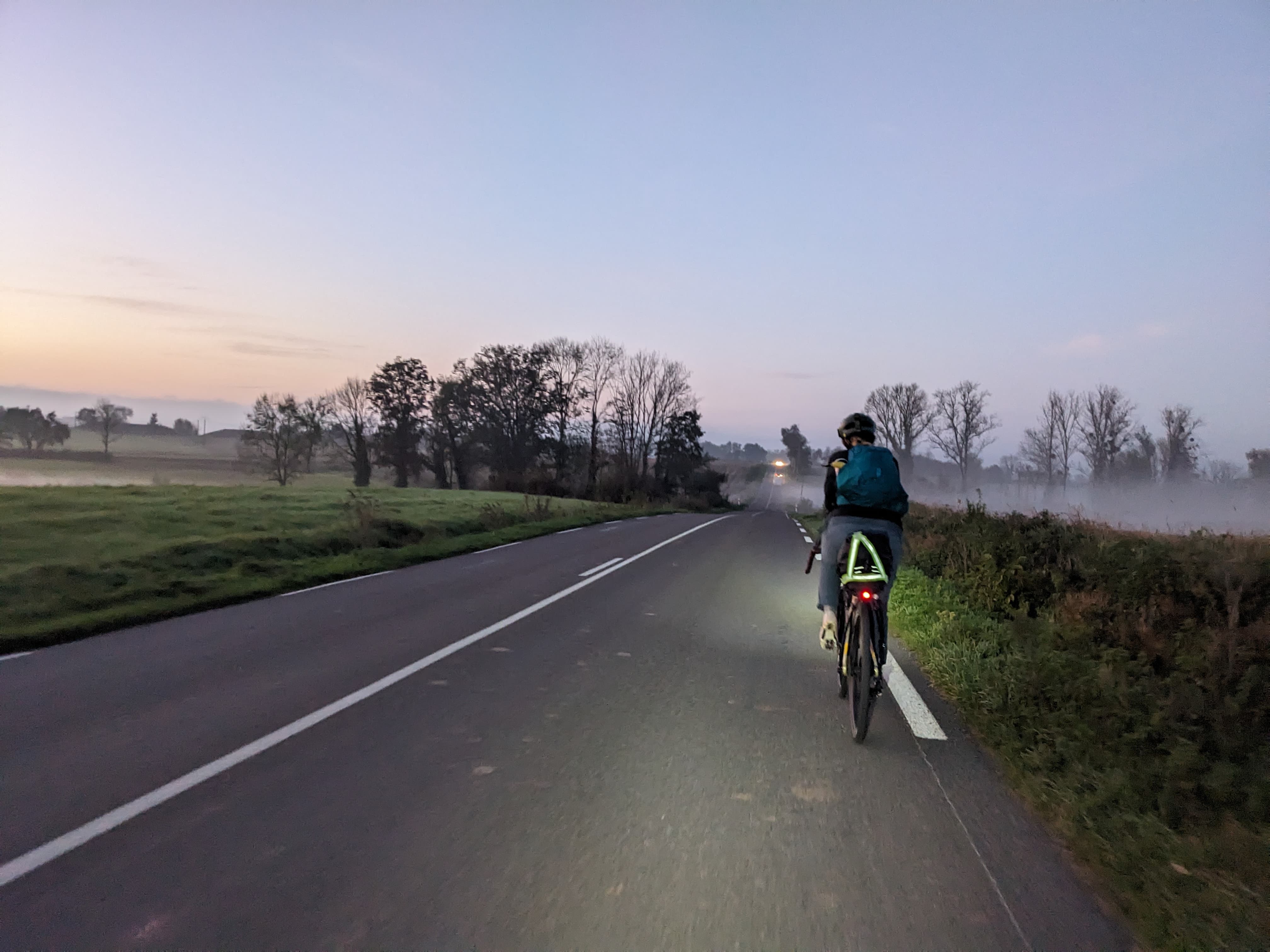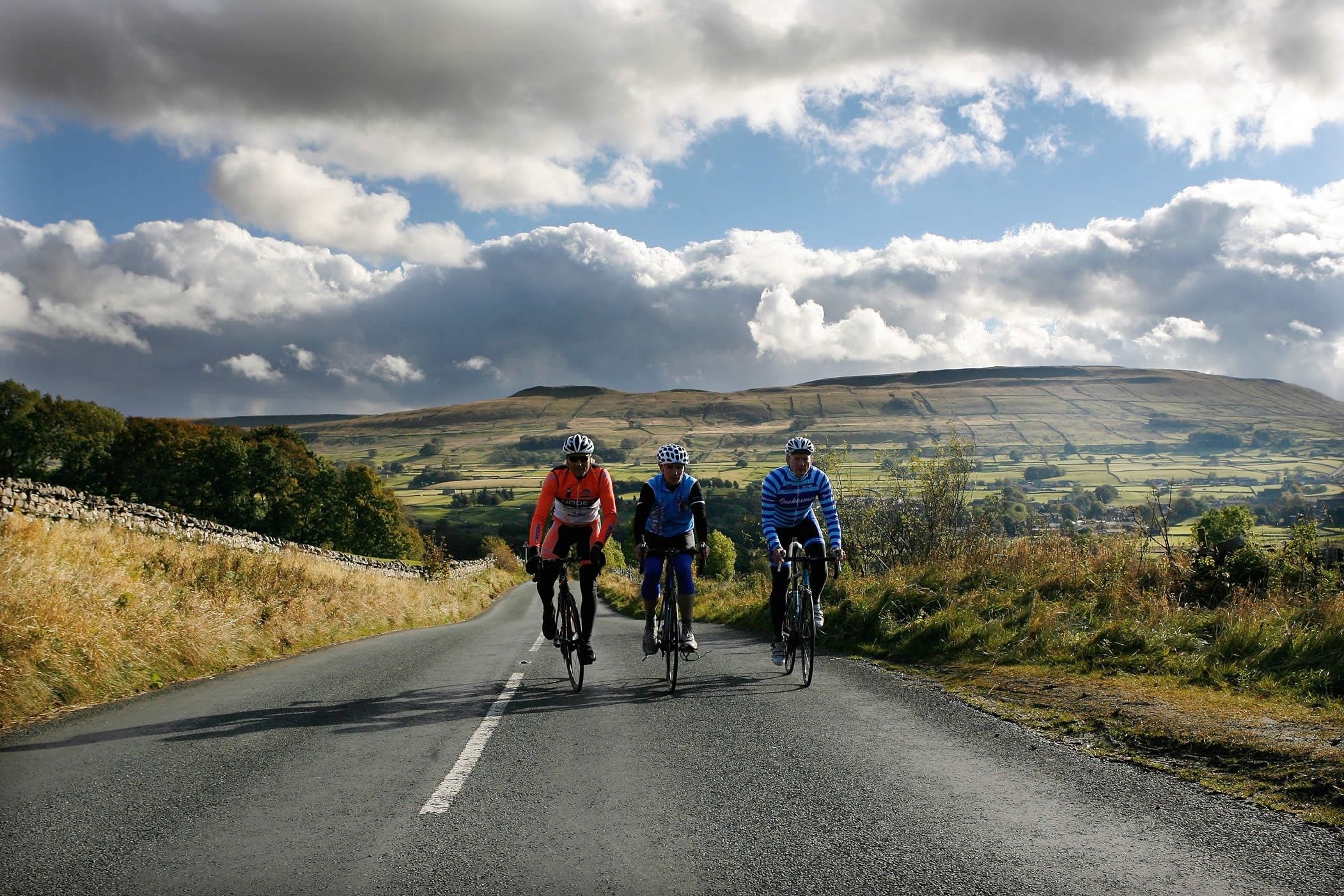Are you ready to tackle long-distance cycling but unsure where to start? Training for those miles can feel overwhelming, but it doesn’t have to be.
With the right plan, you can build endurance, strength, and confidence step by step. Imagine how great it will feel to power through your ride without running out of energy or struggling to keep up. This guide will show you exactly how to train smart, avoid common mistakes, and get the results you want.
Keep reading, and you’ll discover simple strategies that make long-distance cycling not just possible, but enjoyable.
Setting Goals
Setting clear goals is the first step to succeed in long-distance cycling. Goals give you focus and motivation. They help you plan your training better. Without goals, training can feel aimless and hard to follow.
Effective goals are specific and realistic. They should match your current fitness and available time. Setting the right goals prevents frustration and boosts confidence. Start small, then increase your targets as you improve.
Choosing The Right Distance
Pick a distance that fits your skill level. Beginners might start with 20 to 50 miles. Experienced riders can aim for 100 miles or more. Choose a distance you feel excited to complete.
Consider the terrain too. Flat routes are easier than hilly ones. Match your distance goal with your bike type and strength. This keeps training enjoyable and safe.
Establishing A Training Timeline
Create a timeline to reach your distance goal. Break down the training into weeks or months. Start with shorter rides, then add more miles gradually.
Include rest days to avoid injury. Plan extra time for bad weather or busy days. A clear timeline keeps you on track and helps measure progress.

Credit: www.canyon.com
Essential Gear
Having the right gear is key for long-distance cycling. It helps you ride longer and stay comfortable. Choosing good equipment saves energy and avoids injuries. This section covers the must-have gear for your cycling journey.
Selecting The Perfect Bike
Pick a bike that fits your body well. A road bike or endurance bike works best for long rides. Check the frame size and test the feel before buying. Lightweight bikes reduce fatigue on long trips. Make sure the bike has reliable brakes and gears. This gear lets you ride smoothly and safely on varied terrain.
Clothing And Accessories
Wear clothes made from breathable fabric. This keeps sweat away and reduces chafing. Padded cycling shorts add comfort on long rides. Use gloves to protect your hands and improve grip. Sunglasses shield your eyes from wind and sun. A water bottle holder helps you stay hydrated easily. Small bags or pouches store tools and snacks.
Safety Equipment
Always wear a well-fitted helmet to protect your head. Bright clothing or reflective gear increases visibility to drivers. Use front and rear lights for riding in low light. A bell or horn warns others on the road. Carry a basic first aid kit for emergencies. Regularly check your bike’s tires and brakes for safety.
Building Endurance
Building endurance is key for long-distance cycling success. Endurance lets you ride longer without feeling tired. It improves your stamina and energy use. Training smart helps your body adapt. You will go further with less effort. Focus on steady progress and consistency.
Base Mileage Development
Start with easy rides to build your base mileage. Ride at a comfortable pace that you can hold for a long time. Increase your weekly miles gradually, about 10% each week. This helps avoid injury and fatigue. Consistent riding builds your aerobic system. It makes your heart and lungs stronger. Base mileage forms the foundation for harder training later.
Long Ride Strategies
Schedule one long ride each week to boost endurance. Plan routes with varied terrain to prepare for real conditions. Keep a steady pace and avoid going too fast early on. Practice eating and drinking during these rides. This trains your body to use fuel well. Rest well after long rides to help recovery. These strategies prepare your body and mind for long distances.
Improving Speed
Improving speed is key to better long-distance cycling. Faster riding saves time and boosts confidence. It also makes tough rides feel easier. Focused training helps increase power and endurance. Small changes in your routine can lead to big gains on the road.
Interval Training
Interval training involves short bursts of high effort. Push yourself hard for a set time or distance. Then, recover with slow riding. Repeat this cycle several times. It trains your body to handle fast speeds better. Your heart and lungs become stronger. Your legs get used to quick pedaling. This type of workout improves your overall cycling speed.
Hill Workouts
Hill workouts build strength and speed together. Find a hill with a steady incline. Ride up at a strong, steady pace. Focus on maintaining speed, not just finishing. Recover on the way down by pedaling slowly. Repeat this several times during one session. Hill training makes your muscles powerful. It helps you ride faster on flat roads too.
Strength And Flexibility
Strength and flexibility are key parts of training for long-distance cycling. Strong muscles help you pedal longer and avoid injuries. Flexibility keeps your body moving smoothly and reduces tightness after rides.
Focusing on these areas builds endurance and improves your overall cycling performance. A balanced routine with core exercises and stretching supports your long hours on the bike.
Core Exercises
A strong core stabilizes your body during cycling. It helps keep your posture steady and reduces back pain. Try planks, bridges, and bicycle crunches for core strength. These exercises are simple and effective for cyclists.
Work on your core 3 times a week. Keep your movements slow and controlled. This builds muscle without causing fatigue.
Stretching Routines
Stretching improves flexibility and eases muscle tightness. Focus on your hamstrings, quads, hips, and lower back. Hold each stretch for 20 to 30 seconds.
Stretch after every ride. It helps your muscles recover faster. Gentle yoga poses can also increase flexibility and relax your body.
Nutrition For Cyclists
Nutrition plays a key role in long-distance cycling. Proper food and drink choices help your body perform well and recover fast. Eating right fuels your muscles and keeps your energy steady. It also helps prevent fatigue and cramps during rides. Focus on balanced meals and smart snacks to support your training and race days.
Daily Diet Tips
Eat a mix of carbs, proteins, and fats every day. Carbohydrates give you quick energy. Choose whole grains, fruits, and vegetables. Protein helps repair muscles. Include lean meats, beans, or nuts. Healthy fats from fish, seeds, and oils support endurance. Avoid too much sugar and fried foods. Eat regular meals to keep your energy stable.
Fueling During Rides
Long rides need extra energy on the go. Eat small snacks every 30 to 45 minutes. Choose easy-to-digest foods like energy bars, bananas, or gels. These provide quick carbs to keep your legs moving. Test different foods in training to find what suits you best. Don’t wait until you feel tired to eat.
Hydration Strategies
Drink water often to stay hydrated. Dehydration reduces your strength and focus. Sip water every 15 to 20 minutes during rides. For rides over an hour, add sports drinks to replace lost salts. Avoid drinking too much at once to prevent stomach discomfort. Check your urine color; pale yellow means good hydration.
Recovery Techniques
Recovery is a key part of training for long-distance cycling. It helps your body heal and grow stronger. Without proper recovery, your muscles stay tired and can get injured. Good recovery techniques boost your performance and keep you cycling longer.
These techniques focus on rest, sleep, and therapy. They reduce soreness and improve your energy. Let’s explore some important recovery methods.
Rest Days
Rest days give your muscles time to repair. Avoid heavy workouts on these days. Light activities like walking or gentle stretching help blood flow. Rest days prevent burnout and keep your training steady. Plan at least one or two rest days each week.
Sleep Importance
Sleep is when your body heals the most. Aim for 7 to 9 hours every night. Good sleep improves muscle recovery and mental focus. Avoid screens and caffeine before bedtime. Create a calm environment to help you fall asleep faster.
Massage And Therapy
Massage helps relax tight muscles and improve circulation. Use foam rollers or get professional massages regularly. Therapy like stretching or yoga also aids recovery. These methods reduce muscle stiffness and speed up healing.
Mental Preparation
Mental preparation is as important as physical training for long-distance cycling. Your mind needs strength to push through tough rides and long hours on the bike. Training your mental toughness helps you stay calm and focused during challenging moments. It builds confidence and keeps negative thoughts away.
Strong mental habits improve your overall performance. They help you enjoy the ride, even when it gets hard. Here are some ways to prepare your mind for long-distance cycling.
Staying Motivated
Set clear and simple goals for each ride. Celebrate small wins like finishing a tough section. Visualize yourself completing the full distance. Think about the joy of crossing the finish line. Keep a training diary to track progress. Remind yourself why you started cycling.
Join a cycling group or find a training partner. Sharing your journey keeps motivation high. Listen to music or podcasts to stay entertained. Break long rides into smaller parts. Focus on one section at a time.
Handling Challenges
Expect tough moments on your long rides. Prepare for bad weather and physical fatigue. Practice deep breathing to stay calm. Use positive self-talk to fight doubts. Replace “I can’t” with “I will try.”
Learn to accept discomfort as part of the process. Take short breaks to refresh your mind. Keep your focus on the road, not the pain. Remember, every challenge makes you stronger. Mental toughness grows with each challenge faced.
Tracking Progress
Tracking your progress is a key part of training for long-distance cycling. It helps you see how far you have come and what you need to improve. Monitoring your rides keeps you motivated and focused on your goals.
Regular tracking shows patterns in your performance. It also helps avoid overtraining or injury. By keeping records, you can plan better and ride smarter.
Using Apps And Devices
Many apps and devices can track your cycling data. They record distance, speed, time, and heart rate. Some apps also map your route and show elevation changes.
Using these tools gives clear feedback after each ride. You can compare your current rides with past ones. This makes it easy to see improvements or areas to work on.
Devices like GPS watches and bike computers provide real-time data. This helps you adjust your effort during rides. Apps often include training plans and tips tailored to your progress.
Adjusting Plans
Tracking progress shows if your training plan fits your needs. You can change distance, speed, or rest days based on results. Adjusting plans helps prevent burnout and keeps training effective.
Set small goals based on your data. Make changes slowly to avoid injury. If you struggle with a certain part, focus more on that area.
Listening to your body and tracking data together guide plan changes. This balance helps you build endurance safely and steadily.

Credit: www.canyon.com

Credit: join.cc
Frequently Asked Questions
What Is The Best Training Plan For Long-distance Cycling?
A structured plan includes gradual mileage increases, rest days, and cross-training. Focus on endurance, strength, and recovery for optimal progress.
How Often Should I Train For Long-distance Cycling?
Aim for 3-5 cycling sessions weekly. Include long rides, intervals, and easy recovery rides to balance intensity and rest.
What Nutrition Supports Long-distance Cycling Training?
Eat balanced meals with carbs, proteins, and fats. Hydrate well and consume energy-rich snacks during long rides to maintain stamina.
How Can I Prevent Injuries During Cycling Training?
Warm up before rides, stretch regularly, and strengthen core muscles. Use proper bike fit and listen to your body to avoid strain.
Conclusion
Training for long-distance cycling takes time and patience. Build your strength with regular rides. Rest is just as important as exercise. Eat healthy food to keep your energy high. Stay consistent and listen to your body’s needs. Enjoy the journey, not just the goal.
Small steps lead to big progress. Keep your bike ready and your mind focused. Soon, long rides will feel easier and more fun. Keep moving forward, one pedal at a time.



